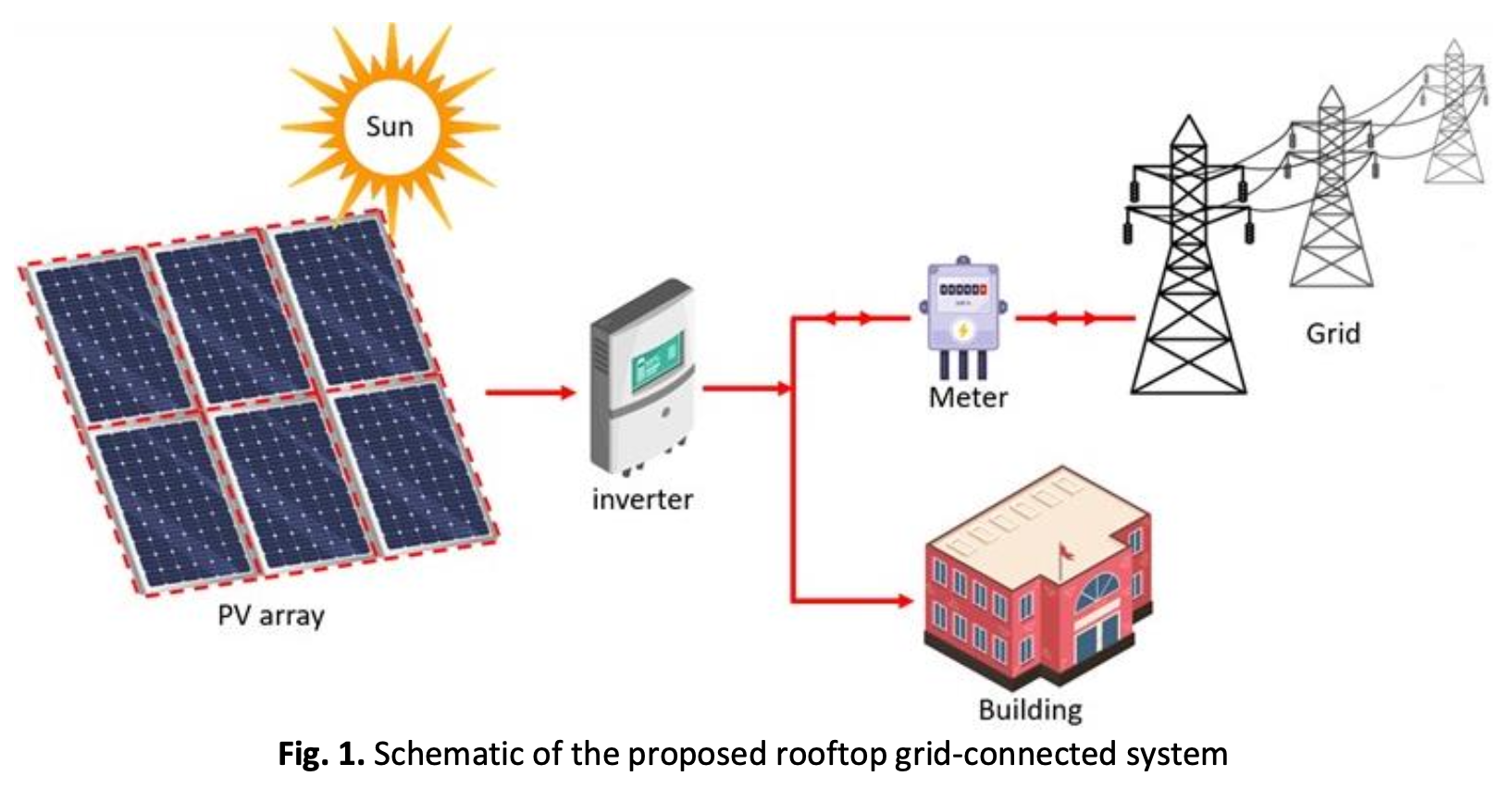Design, Installation, and Performance Monitoring of a 105 kWp Rooftop Solar PV System
DOI:
https://doi.org/10.37934/arfmts.111.2.1642Keywords:
Solar PV, rooftop, grid-connected, renewable energy, feasibility study, levelized cost of energyAbstract
Rooftop Solar PV systems are gaining growing attention on the path toward carbon neutrality. Hence, a great effort must be exerted to ensure smooth and efficient penetration of such systems into the existing utility grids. In the current work, a 105 kWp rooftop solar system is designed and installed to fulfil part of the electric demand of the faculty of Engineering, Zagazig University, Egypt. The performance parameters of this grid-connected solar PV system are optimized for the least-cost of electricity supply through using industry-standard software NREL SAM. For the current rooftop system, fixed orientation of an optimized tilt angle of 23 degrees is preferred over sun-tracking systems due to the reduced operating and maintenance costs. The annual energy production of the system is 175,700 kWh with a capacity factor of 19.1%. Through using parametric optimization and inter-connected financial analysis algorithms, it was possible to define the least cost for the electricity supplied to the grid to be 0.55 EGP/kWh, which achieves grid parity in Egypt. The project is finically profitable without any subsidy, with a discounted payback period of 7.9 years, and IRR (on equity) of 20.1 % and saves 1882-ton CO2 over its lifetime. Sensitivity analysis showed that the electricity escalation rate greatly enhances the project finances. In the first year of operation, the system performed fairly well compared with the theoretical design, provided that the system is frequently cleaned (at least once a week) and continuously connected.
Downloads

































